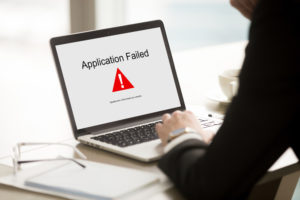 Disaster recovery is an important part of business continuity, but enterprises often either underestimate the necessary steps for an effective plan, or find it too overwhelming and time-consuming to implement them. In the case of a natural disaster, disaster recovery will determine whether a business survives, so take time to train clients on how to implement the critical steps.
Disaster recovery is an important part of business continuity, but enterprises often either underestimate the necessary steps for an effective plan, or find it too overwhelming and time-consuming to implement them. In the case of a natural disaster, disaster recovery will determine whether a business survives, so take time to train clients on how to implement the critical steps.
Understand the difference between backups and disaster recovery. A regularly scheduled backup is necessary, but it’s not everything. Having a plan to determine how a company will access backup data is an equally important step.
Identify critical data and use cross-regional backup strategies. There’s always a balance between the desire to back up every piece of data and the cost associated with this level of disaster recovery. Businesses need to identify crucial data and prioritize its backup and recovery procedures. Keep in mind that where data is stored is also an important decision. Storing critical information geographically close defeats the purpose of a backup. Cross-regional strategies are an effective way to protect data in case of a severe weather event.
Assess RTO and RPO. The recovery time objective (RTO) is the length of time the system can be down before the business experiences unacceptable monetary loss. The recovery point objective (RPO) is the amount of time the company can feasibly lose of the data record. For instance, if losing four hours of data is unacceptable, then the company will need backups more often than a company that is okay with losing 10 hours of data. The disaster recovery budget will need to prioritize RTO and RPO, as more timely backups will be more costly.
Choose a plan and test it. There are several different approaches to take for disaster recovery:
- Backup and restore: An inexpensive method that can be time-consuming
- Pilot light: Keeps critical data and applications ready in case of emergency
- Warm standby: Core elements of the business run on standby at all times
- Multi-site: All business applications are split between two or more locations
Each of these options has its benefits and drawbacks, but none of them are foolproof. Once a disaster recovery plan has been chosen, it’s important to test it multiple times and determine what kinds of instances could prevent disaster recovery and threaten business continuity.
Weigh the option of disaster recovery as a service. In the current mindset of Everything as a Service (XaaS), it’s worth at least considering the advantages of outsourcing disaster recovery. A company that specializes in disaster recovery can add a layer of confidence and trust to any business continuity plan.
eXemplify specializes in helping businesses streamline the selection, implementation, and management of IT infrastructures. Our team works with sales partners to help solve the business problems of their clients, including issues related to disaster recovery. Contact eXemplify to talk more about the right business continuity plan for your clients.